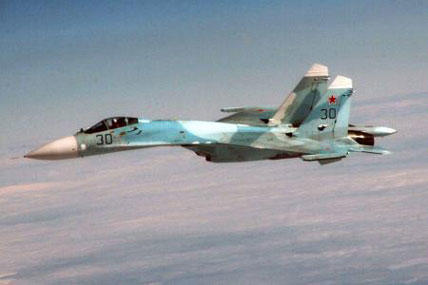Russia's military maneuvers in Crimea have left U.S. analysts questioning what sort of threat the former Cold War military giant's forces, platforms and weaponry currently present.
Russian leaders have pushed to expand the military's conventional land, air and sea forces and quickly transition into the higher-tech information age while steadily pursuing next generation platforms.
Overall, Russia's conventional and nuclear arsenal is a fraction of what it was during the Cold War, but the country is pursuing a new class of submarines, a T-50 stealth fighter jet, next-generation missiles and high-tech gear for individual ground soldiers.
During the Cold War, the Russian defense budget amounted to nearly half of the country's overall expenditures, said Daniel Goure, vice president of the Lexington Institute, a Va.-based think tank. Now, the countries' military spending draws upon a smaller percentage of the country's overall budget.
However, the Russian defense budget is climbing again. From 2006 to 2009, the Russian defense budget jumped from $25 billion up to $50 billion. The 2013 defense budget is listed at $90 billion.
"What [the Russian military] have now is a military more appropriate to a developing country. They have not have been able to replace quantity with quality. It is by no means clear that they have the training and the experience in combined arms conflict to successfully engage NATO," Goure said.
He added that the Russian conventional military during the Cold War -- in terms of sheer size -- was likely five times what it is today. Granted, the U.S. military was similarly sized during the Cold War and has since reduced its end strength and budget.
Overall, the Russian military had roughly 766,000 active front line personnel in 2013 and as many as 2.4 million reserve forces. During the Cold War, the Russian Army had as many as 3 to 4 million members.
The Russian military is listed as having more than 3,000 aircraft and 973 helicopters. On the ground, Globalfirepower.com says Russia has 15,000 tanks, 27,000 armored fighting vehicles and nearly 6,000 self-propelled guns for artillery.
Goure said the Russian military made huge amounts of conventional and nuclear weapons in the 80s, ranging from rockets and cruise missiles to T-72 tanks and very effective air defenses. In fact, the Russian built S-300 and S-400 anti-aircraft air defenses, if maintained and modernized.
"They are attempting to do a combination of organizational reform and they are adding more money. You still have a military with eight toes in the 20th century industrial base and maybe two toes in the information age precision warfare era," Goure said.
Meanwhile, the Russian Air Force sent six Sukhoi Su-27 fighter jets and three unidentified transport aircraft to Belarus on March 13, according to the Russian state sponsored Ria Novosti. Often compared to the U.S. Air Force's F-15 Eagle fighter, the Su-27 is a maneuverable twin engine fighter built in the 1980s and primarily configured for air superiority missions.
The Su-27 deployment was followed two days later by the arrival of a Beriev A-50 Mainstay surveillance aircraft to Baranovichi Air Base in Belarus, according to a report from Jane's Defense.
While the Russian's $90 billion defense budget is a fraction of what the U.S. spends, the country is trying to build next-generation platforms.
In fact, the Russian military recently named is new Kalina-class conventional submarine equipped with air-independent propulsion, according to Russian news outlet Ria Novosti.
"Air-independent power plants offer significant advantages over diesel-electric submarines, which must surface regularly to recharge their batteries, and nuclear submarines, which must continually run noisy pumps to cool their reactors," Ria Novosti reports.
The U.S. Navy does not use air-independent power but instead uses diesel-electric and nuclear-powered submarines.
The Russian Navy has 352 ships, including one aircraft carrier, 13 destroyers and 63 submarines. The Black Sea is a historically significant area for Russia in terms of economic and geopolitical considerations as it helps ensure access to the Mediterranean.
As many as 20 Ukranian Navy ships and vessels have been taken over by Russia's Black Sea fleet as part of Russia's annexation of Crimea. The move includes the transfer of a command ship, several missile boats, a mine sweeper and Ukraine's only submarine, the report said.
Meanwhile, the Russian Navy has begun air defense exercises from the Admiral Kuznetsov aircraft carrier, which is currently sailing in the eastern Mediterranean Sea, Jane's reports.
-- Kris Osborn can be reached at kris.osborn@monster.com





























